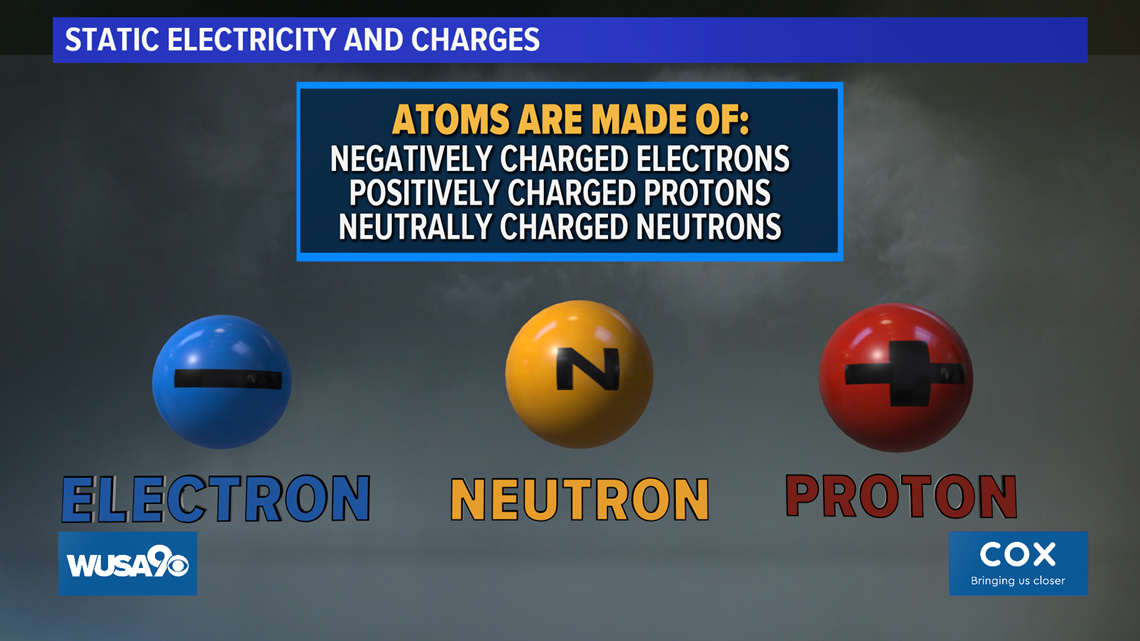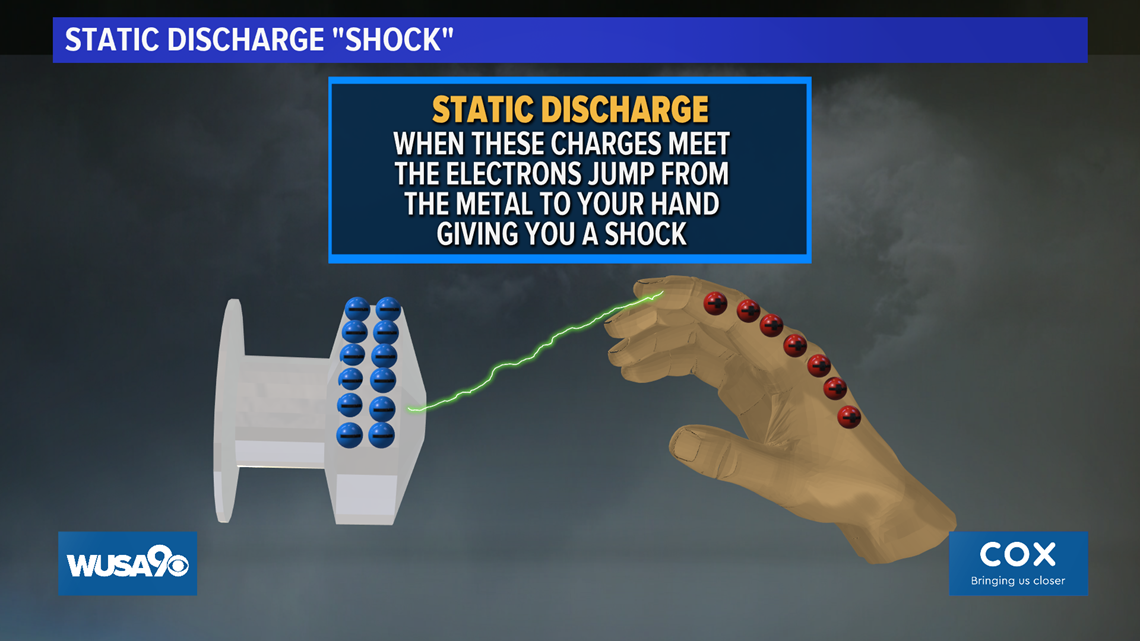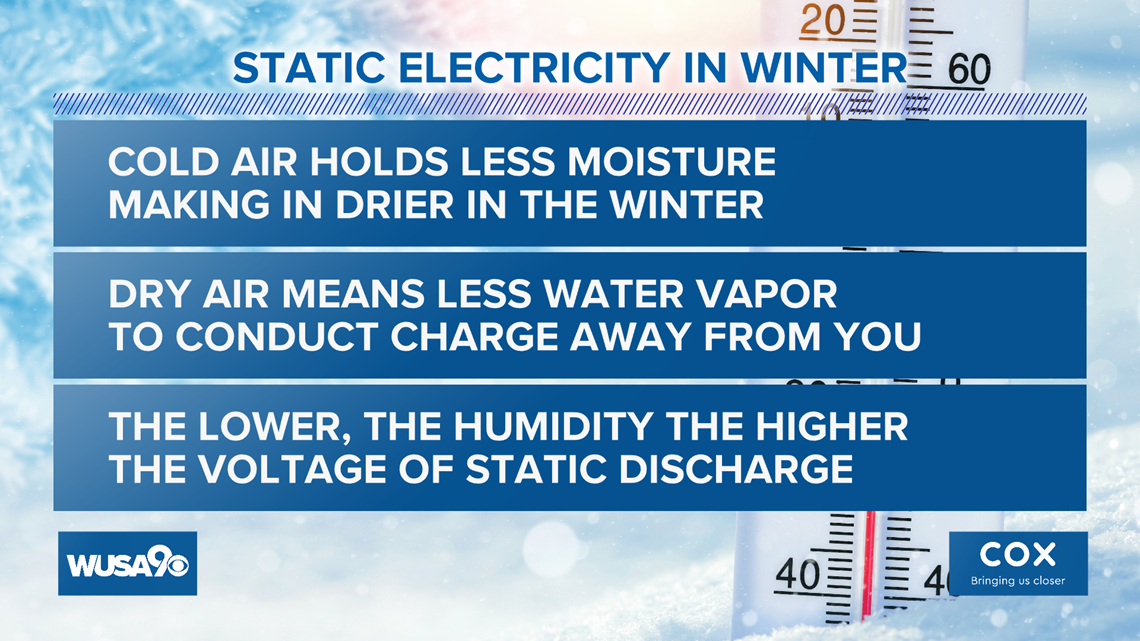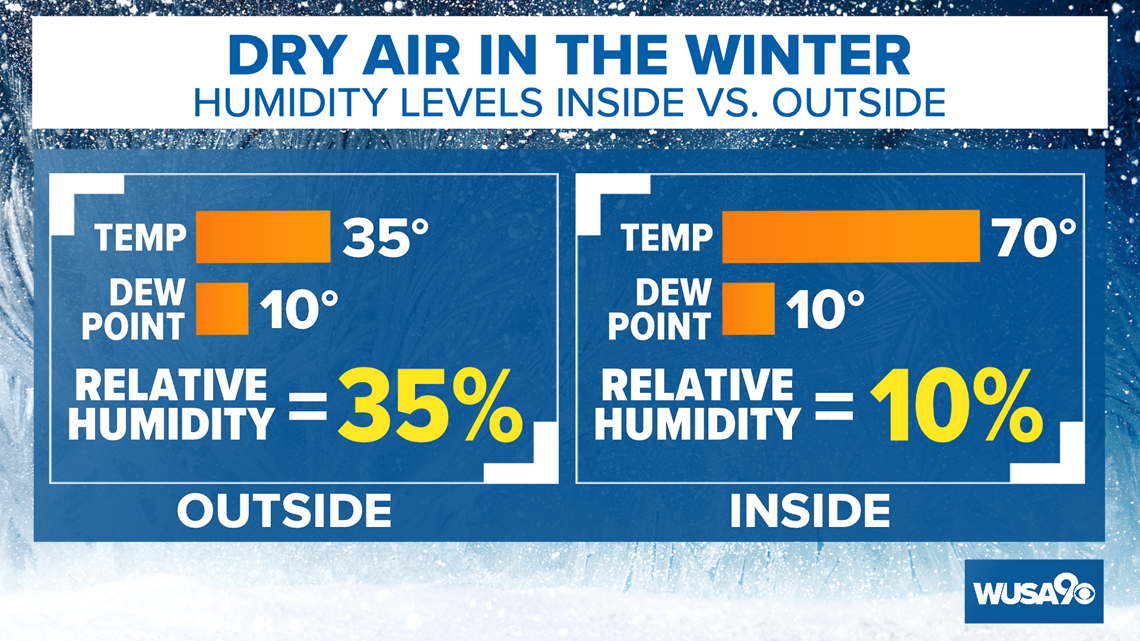WASHINGTON — Your skin is dry, lips are chapped and you are constantly being shocked when you open doors, touch your dog or go in for a kiss from your partner. But why?
These are all impacts from cold, dry air during the winter.
Let's dive into how a cold winter day can lead to more static electricity, and how the dry air impacts your health.
What Is Static Electricity?
In short, static electricity is the buildup of an electrical charge in an object.
When you think of the word charge, think back to your days in high school chemistry learning about atoms. Atoms are made up of protons, electrons and neutrons. Protons have a positive charge, while electrons have a negative charge. Neutrons are neutral.


As your body rubs against clothing, blankets and even the carpet, you lose electrons and become positively charged.
When you go to touch a doorknob or someone else, there may be a different negative charge. The shock you feel is your hand discharging, as you go from a positive charge to a neutral charge. This is a very small scale version of the discharge of static electricity. Lightning, for example, is a much larger scale of this discharge of static electricity.


Static electricity can also cause objects to cling to one another. If you rub a balloon on your head, your hair will stand up. That's another example of static charge or electricity.
Why static electricity is more predominant in winter
In the winter, the temperatures are colder. Cold air holds less moisture than warm air, so we have a lower humidity level and less water vapor in the air.
With less water vapor in the air to conduct this charge away from you, your body can carry a higher charge. With a higher charge, there is a greater discharge.
So, because of the dry air in winter, you may notice more frequent, and more significant, shocks when you go to touch a metal object like a doorknob or you go to shake a coworker's hand.


Dry air in your house
The furnace in your house pulls in the dry air from outside and heats it up.
If the temperature outside is 35 degrees with a dew point of 10 degrees, the relative humidity outside is 35%.
If your furnace pulled that dry air from outside into your house with no previous higher moisture inside and heated it up from 35 degrees to 70 degrees, the relative humidity of that air would drop to just 9.6%.
That's very low humidity -- the ideal relative humidity in your home is between 30% and 50%.


How can you fix this? You need to add water vapor back to the air.
The easiest and most effective way is to add humidifiers throughout your house. They do the job of converting a large volume of water, and then spraying it into the air as a vapor.
If you don't have a humidifier, you can also place large bowls of water in every room of your house. That water will eventually evaporate into your house. Try filling up a sink or tub in the bathroom to accomplish this.
By adding more humidity in your house, you will notice over time that there will be less of those "shocking" moments than before.
Impacts of dry air on your health
The dry air can be uncomfortable. It can give you dry skin, chapped lips and nosebleeds. But it can also be less than ideal for your health, and make you more susceptible to catching a cold or the flu.
The upper part of your respiratory system is lined with mucus membranes which capture dirt, dust, bacteria and viruses before they make it all the way down to your lungs.
When the air is very dry, this can dry out those mucus membranes and make them far less effective at catching those bacteria and viruses before they make it into your lungs.
For the sake of your health, keep your home at a comfortable humidity.



